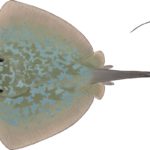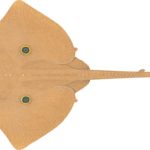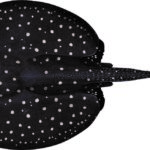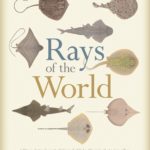The newly released book Rays of the World is the first illustrated guide to the world’s 633 known species of stingrays, skates, electric rays and sawfishes.
- Dasyatis marmorata, or marbled stingray
- A newly-described species, the Eastern Central Atlantic skate Raja parva.
- A whiptail ray
- Cover of the newly published book Rays of the World
One of most widespread and diverse groups of fishes, rays play vital ecological roles in the world’s marine and freshwater environments. They can be predators, scavengers and prey and are harvested for many uses, including food, leather goods and medicine. The barbs of stingrays and saws of sawfishes have even been used as traditional knives and weapons.
The newly released book Rays of the World is the first illustrated guide to the world’s stingrays, skates, electric rays and sawfishes since the first ray was described by Linnaeus, the founder of modern taxonomy, in 1758.
Many of the book’s 633 species of rays were previously unknown to science, meaning they have not been on anyone’s radar for research and conservation. Some have been hiding right at our feet.
“The Australian Whipray has a one metre disc and a very long whip-like tail. It’s a familiar sight in the Noosa River, often seen swimming in water only a few centimetres deep, but it was described and named only three months ago,” said the book’s lead editor Dr Peter Last.
“In August we described and named the Mumburarr Whipray, which is found in Northern Australia and Papua New Guinea. One of the world’s largest stingrays, it measures more than 1.6 metres across its disc, is more than four metres long and weighs more than 100 kilograms,” he said.
Around 20 per cent of the world’s rays are in danger, including 10 critically endangered species, 30 endangered species, and 72 vulnerable species.
“Without intervention, some of the species celebrated in our book may soon be extinct, including many some stingray species from Southeast Asia and Tasmania’s largest endemic fish, the Maugean Skate,” Dr Last said.
The research underpinning Rays of the World proved challenging, with the book’s authors searching natural history collections and museums around the world, including CSIRO’s Australian National Fish Collection in Hobart, as well as searching for rays in the wild and at remote fish markets.
“Some species are known only from specimens squashed into preserving jars. Other species we thought we knew fairly well, but when we looked closer one species turned out to be as many as six or seven different species,” Dr Last said.
DNA analyses provided amazing new insights, allowing the researchers to recognise not just new species but whole new genera and families.
The rays of the world range in size from seven metre-wide mantas and seven metre-long sawfish to the tiny electric sleeper ray, which reaches maturity at only eight to ten centimetres long.
Rays are not typically aggressive to humans, but the stings of stingrays and sharp saws of sawfishes can cause injuries if these animals are mishandled or startled.
Rays of the World was published by CSIRO Publishing and beautifully illustrated with paintings of each species, reflecting the difficulty of photographing preserved specimens or rare rays in the wild.
The book was funded by the US National Science Foundation, CSIRO Oceans and Atmosphere and CSIRO’s Australian National Fish Collection.






9th December 2016 at 4:03 pm
Looks beautifull. Dear Santa, please bring me this truly extraordinary book.
9th December 2016 at 4:12 pm
Dear Santa, if your elves don’t have capacity on their printing press, you can buy the book here: http://www.publish.csiro.au/book/7053/